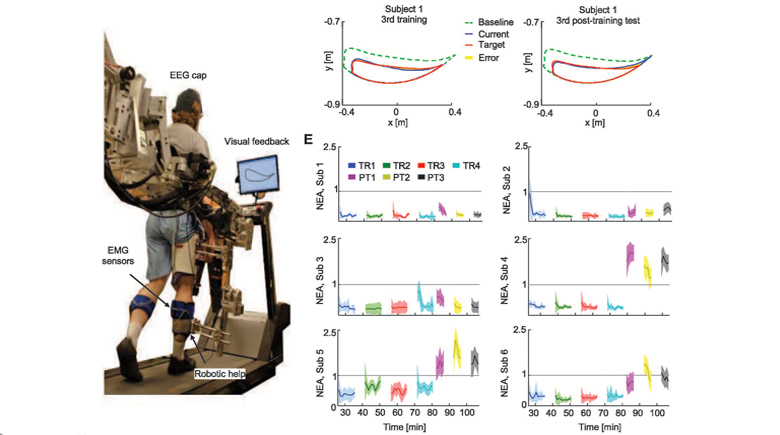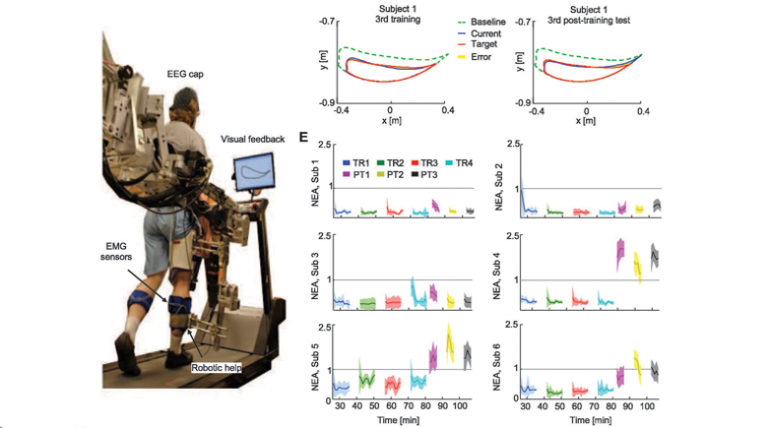
Lower-extremity robotic exoskeletons are used in gait rehabilitation to achieve functional motor recovery. To date, little is known about how gait training and post-training are characterized in brain signals and their causal connectivity. In this work, we used time-domain partial Granger causality (PGC) analysis to elucidate the directed functional connectivity of electroencephalogram (EEG) signals of healthy adults in robot-assisted gait training (RAGT). Our results confirm the presence of EEG rhythms and corticomuscular relationships during standing and walking using spectral and coherence analyses. The PGC analysis revealed enhanced connectivity close to sensorimotor areas (C3 and CP3) during standing, whereas additional connectivities involve the centroparietal (CPz) and frontal (Fz) areas during walking with respect to standing. In addition, significant fronto-centroparietal causal effects were found during both training and post-training. Strong correlations were also found between kinematic errors and fronto-centroparietal connectivity during training and post-training. This study suggests fronto-centroparietal connectivity as a potential neuromarker for motor learning and adaptation in RAGT.

